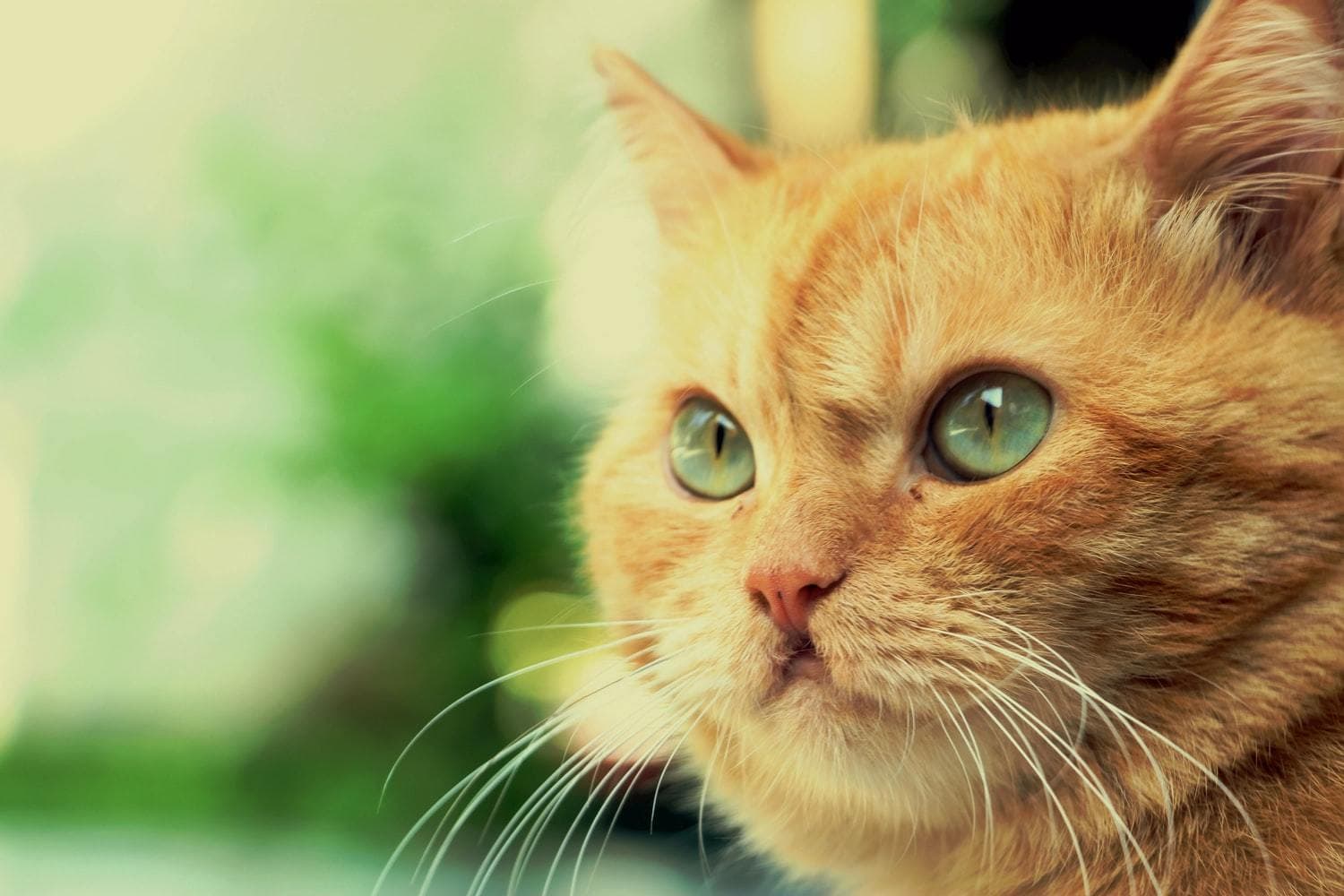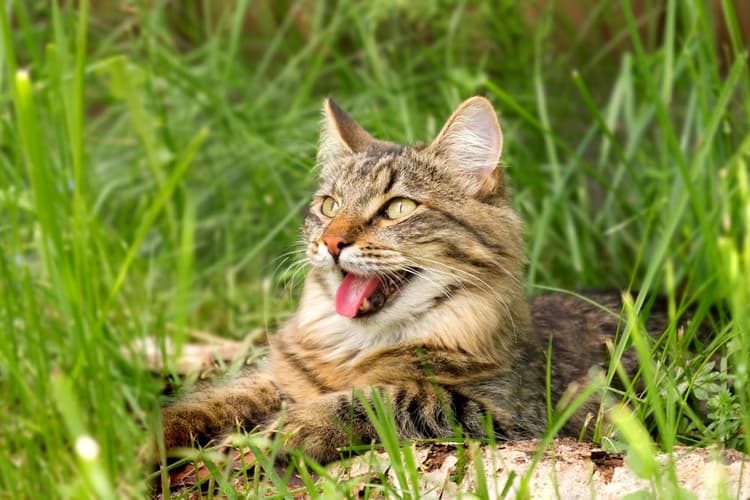We’re thoroughly in love with cats, which is why it's so important for us to provide pet parents like you with products and resources that can help them live better lives, even longer. In this post, we'll cover the most common viruses in cats, signs of infection, and the importance of vaccinations and how they work to protect your cat's health.
What is a Virus?
A virus is an infectious microbe that is extremely small in comparison to other microorganisms. Viruses are the most abundant biological entities found on earth and they infect humans, animals, fungi, bacteria, and other microorganisms alike.
Viruses are often described as "organisms at the edge of life". They are packages of protein that contain genetic material (DNA or RNA) and they differ from other microorganisms because they are not made up of cells and can neither reproduce nor grow on their own through cell division. Instead, viruses need to infect a living host's cells to reproduce and make copies of themselves. Ultimately, this process damages and/or kills host cells as a result.
How Can Vaccines Protect My Cat Against Viruses?
Just as in humans, when cats get a viral infection, it causes an immune response. However, these immune responses can also be initiated by giving a vaccine that helps cats acquire immunity against a specific virus.
The American Animal Hospital Association (AAHA) and the American Association of Feline Practitioners (AAFP) categorize vaccines for cats into three main groups:
Core vaccines****: all cats should receive the vaccine. The rate of occurrence of the virus and mortality rates are both well-known, so vaccination results in good protection against the diseases that the viruses cause. Examples include the rabies virus and the feline panluekopenia/feline distemper virus.
Non-core vaccines: optional vaccines to be considered for cats based on their risk for exposure to the disease, such as where the cat lives, whether they go outdoors, or other factors (e.g., multi-cat households).
Not recommended vaccines: not recommended at this time pending new scientific evidence on the benefits of vaccination and/or ability of the vaccine to uniformly prevent disease cat populations to justify routine use.
The AAHA also provides an online lifestyle-based vaccine calculator that is meant to support conversations between pet parents and veterinarians as they work together to create individualized vaccination plans for cats.
What Are The Most Common Viruses Found in Cats?
1. Feline Immunodeficiency Virus (FIV)
The Feline Immunodeficiency Virus (FIV) is the most common infectious disease seen in cats across the world. In North America, FIV infects between 2.5–5% of healthy cats, whereas rates of infection can be 15% or higher in cats that have underlying illness or other risk factors.
The most common pathway of FIV transmission in cats is through biting, since the saliva of an infected cat contains the virus. Cats that roam freely outdoors are at a higher risk for FIV, since they are exposed to other cats and the increased risk for fights that could lead to bites.

FIV compromises the immune system of an infected cat, which leads to increased risk for secondary infections and disease. Signs of FIV only appear if an infected cat has contracted a secondary condition, and many symptoms are vague and easily associated with a range of conditions.
While FIV transmission through regular social contact between cats is low, it is still possible. If one cat in a multi-cat household does become infected, you would want to keep them separate from non-infected cats. It is also important to know that there is no cure for FIV in cats. You can help prevent FIV by spaying or neutering your cat and keeping them indoors. However, it's always best to take your cat to the vet and discuss the appropriateness of vaccination for protection against FIV, since even indoor-only cats can sometimes escape to the outdoors.
2. Feline Infectious Peritonitis (FIP)
Feline infectious peritonitis (FIP) is a rare and progressive disease caused by feline coronavirus (FCoV). This feline coronavirus is not transmissible to humans, dogs, or other species.
The majority of cats will get exposed to FCoV that causes FIP, and become carriers of the virus. Actual development of the disease depends on whether a specific interaction occurs between a cat's immune system and a mutated form of the virus.
FIP is a virus that typically lives in the intestinal system of an infected cat, and is most commonly spread via viral shedding in a litter box or other areas where another cat comes in contact with the fecal matter of an infected cat. It can also be spread through other bodily fluids.

FIP can affect the pancreas, kidney, liver, and/or other organs. Symptoms of FIP, such as loss of appetite or lethargy, are easily associated with a range of other conditions, making diagnosis difficult.
FIP comes in two main forms: wet (effusive) or dry (non-effusive). The wet form leads to abdominal bloating and swelling and can lead to issues with a cat's heart and lungs. The dry form tends to affect the eyes and neurological system, the latter of which can lead to balance issues and even seizures.
At this time, there is no cure for FIP. Since many cats are carriers of FCoV but aren't affected by the specific immune system interaction needed to cause FIP, most cats never develop the disease. According to PetMD, less than 5 percent of cats who become infected with feline coronavirus actually develop FIP. Kitten, cats with chronic diseases, and cats with already compromised immune systems are at a higher risk for FIP.
The American Association of Feline Practitioners does not recommend routine use of the FIP vaccine. If you have questions about FIP and your cat, be sure to ask your veterinarian during a regular wellness visit.
3. Feline Leukemia Virus (FeLV)
Feline leukemia is a condition that only affects cats, and is caused by the feline leukemia virus (FeLV). It is a contagious disease that is transmitted through the bodily fluids of an infected cat, such as saliva from a bite, and it can also be passed from an infected mother to her kittens.
Symptoms of FeLV vary, and are easily associated with other illnesses. Some signs may include appetite and/or weight loss, lethargy, and respiratory symptoms such as runny eyes or nose. Blood testing performed by a veterinarian is the only way to determine if a cat is infected with FeLV.
There is no cure or treatment that completely rids an infected cat of FeLV, so this is a core vaccination that is highly recommended for kittens and young adult cats. The FeLV vaccine is given in a series, and your veterinarian can discuss your cat's initial series and schedule of follow-up vaccination based on their specific needs.
4. Feline Panleukopenia Virus (FPV)
Feline panleukopenia virus (FPV), also referred to as feline distemper, is a viral infection caused by feline parvovirus. It is a highly contagious disease that affects both domestic and wild cats. Once contracted, it can be fatal to the infected cat.
FPV affects the cells in your cat’s body that grow and divide very quickly. These types of cells can be found in many places, including bone marrow, the intestinal tract, skin, and the stem cells of a developing fetus. Also known as feline parvo, this disease can cause a lot of challenges to an infected cat's health.
A cat can get exposed to FPV when they come into contact with other cats’ bodily fluids, such as their saliva, urine, and/or nasal discharge; however, the most common exposure to FPV is through contact with feces. Once the virus spreads in the environment, it can live for years as the feline parvovirus that causes distemper is very robust. This is another reason why this virus is so contagious and vaccination is classified as "core", which means that is highly recommended for all cats.

5. Feline Calicivirus (FCV)
Feline calicivirus (FCV) is one of the two important viruses causing respiratory infections in cats. FCV can be isolated from about 50% of cats with upper respiratory infections. This virus replicates in the oral and respiratory tissues and can be isolated from saliva, urine, respiratory secretions and feces.
The symptoms can occur chronically, acutely or not at all. Acute signs include fever, nasal discharge, sneezing, stomatitis and conjunctivitis. When coupled with bacterial infections, pneumonia can develop too. The FCV can’t be specifically treated, but antibiotics are often used to treat secondary bacterial infections and immune modulators that can sometimes couple the viral infection. The vaccination is classified as "core".
6. Feline Herpesvirus
Feline viral rhinotracheitis (FVR) is an upper respiratory infection caused by the feline herpesvirus. This virus is the second of the two important viruses causing respiratory infections in cats (FCV being the first one). FVR is very contagious and it can cause severe disease, such as lethal pneumonia in kittens.
Feline herpesvirus is transmitted directly and it replicates in the tonsils and nasal and nasopharyngeal tissues. The signs of the infections include coughing, sneezing, nasal discharge, conjunctivitis, lack of appetite and fever. The vaccination against the feline herpesvirus is classified as "core".
7. Rabies
Rabies is a viral disease caused by lyssaviruses. It is characterized by brain inflammation in humans, cats, dogs, and other mammals. Signs of rabies can include fever, tingling, violent movements, confusion, uncontrolled excitement, an inability to move certain parts of the body, and even unconsciousness. If left untreated, this disease almost always leads to death.

Most commonly, rabies is transmitted through saliva from the bite of an infected animal. It can also be transmitted if saliva of an infected animal comes in contact with an open wound or mucous membranes of another animal. Unvaccinated cats allowed to go outdoors are at the highest risk for rabies.
"Outdoor cats may, in the course of daily life, get into a fight with an infected wild animal or an infected stray dog or cat. And although widespread vaccination programs have helped to control rabies in dogs, feral cat populations remain a reservoir host for the rabies virus." – explained WebMD.
The most accurate diagnostic test for rabies is the direct fluorescent antibody test (performed via an examination of the brain). However, this can only be performed after an infected animal has passed away. Making an accurate diagnosis in living animals is more difficult. After incubation, the virus can remain in the animal’s body anywhere from one week to more than a year before it activates itself. Once activated, signs of the disease appear very quickly and death typically occurs within ten days.
Rabies vaccination is classified as "core" by the AAHA for the safety of your cat, as well as of you and the other people and pets in your household. While rabies vaccination is required by law in most states and provinces, the website rabiesaware.org has more information on state-level rabies regulations and laws.

This blog covers only 7 of the most common viruses diagnosed in cats, though there are other viruses that can affect our beloved pets. The severity of viruses depends on many factors, and some are very dangerous to the health of your cat. This is why it is very important to schedule regular wellness visits and discuss your cat's vaccinations needs with your veterinarian so that you can help protect your feline family member from viral infections and their adverse effects.
Always consult with a veterinarian about the vaccination program that's right for your cat. They will advise the recommended vaccines according to your location and your cat's particular lifestyle and needs.









